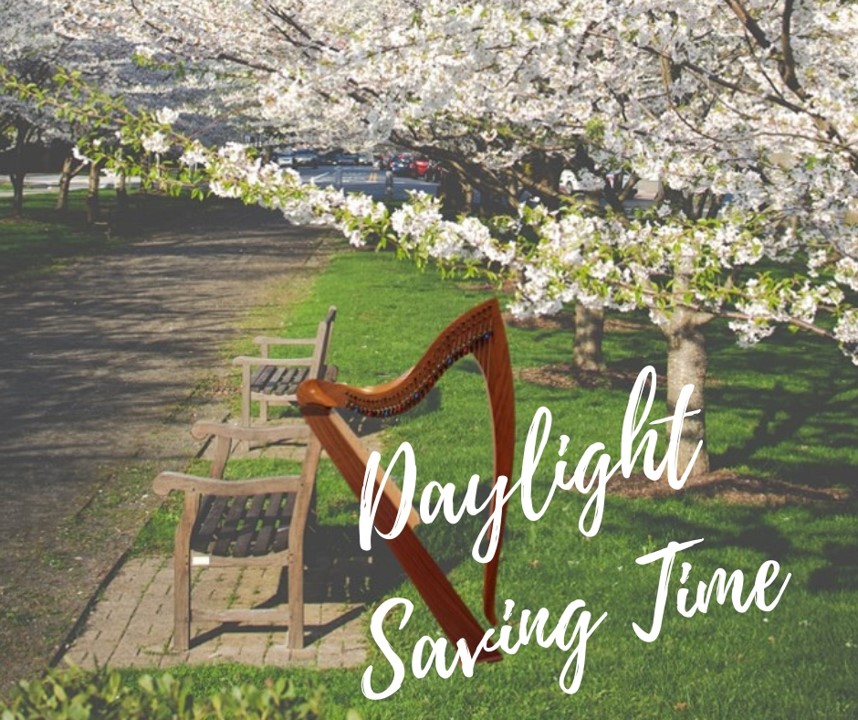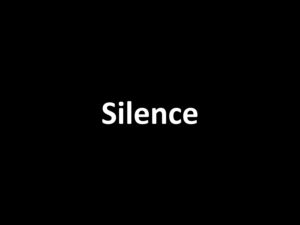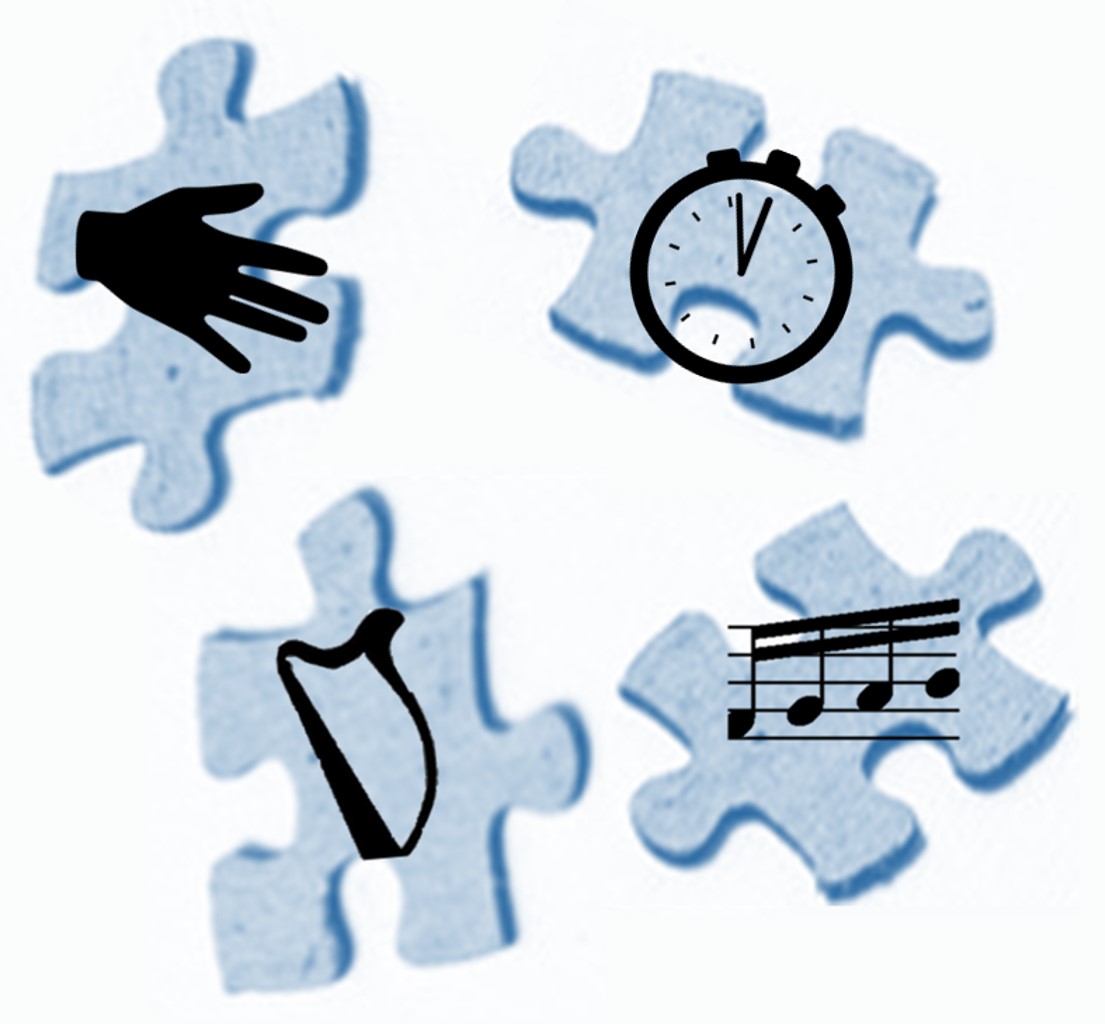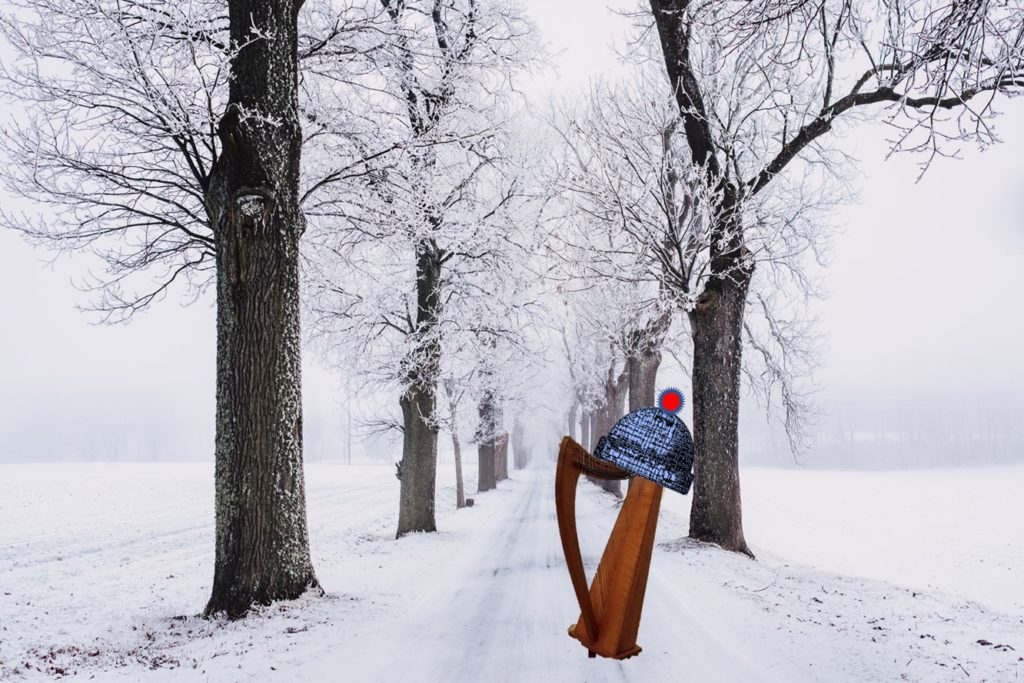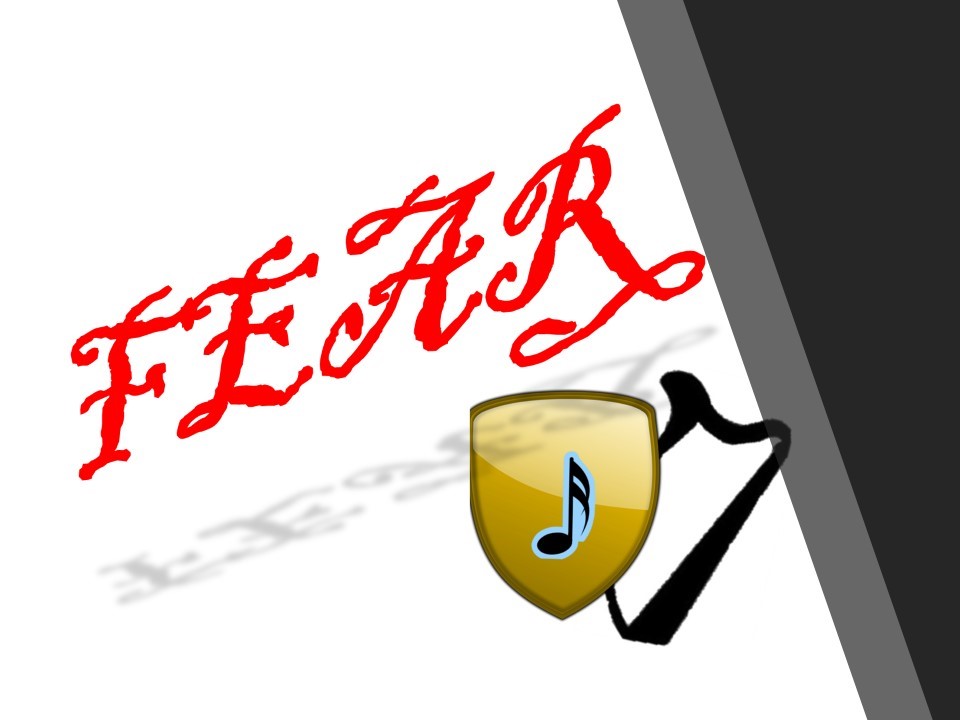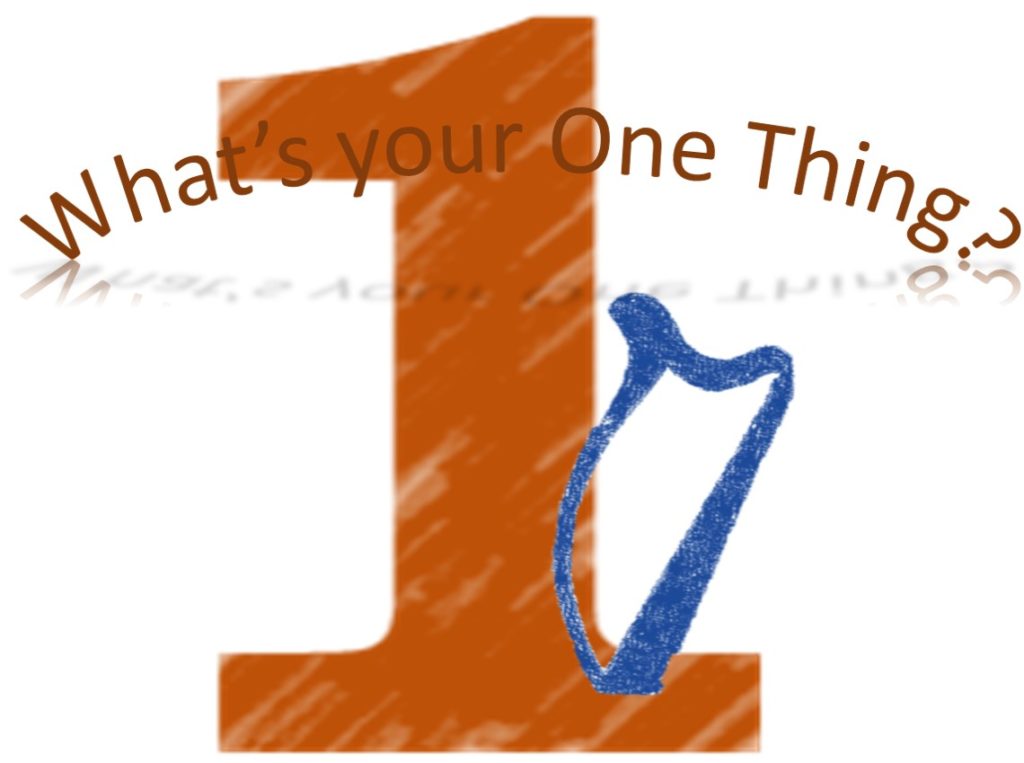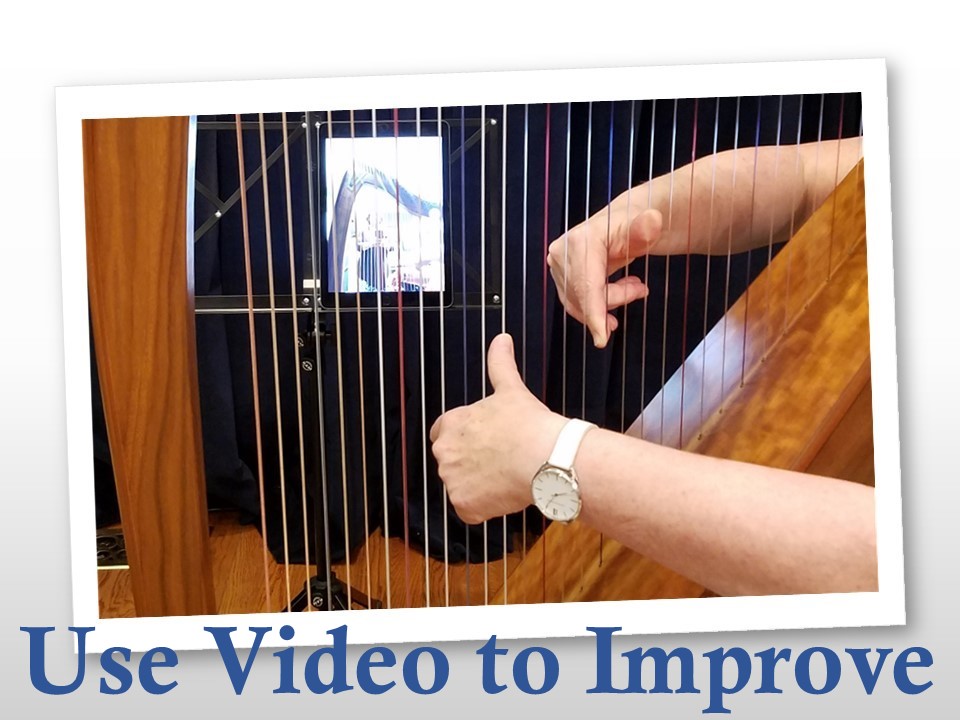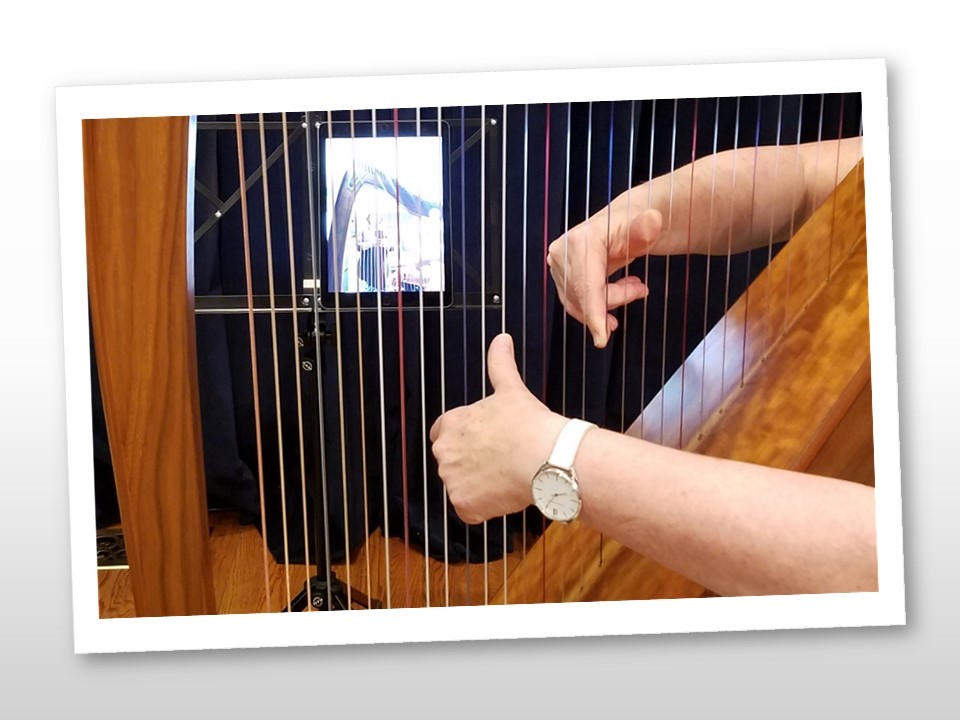It’s early March and so here in the US, whether you agree or not, it’s time to set the clocks ahead – it’s Daylight Saving Time. Yea.
It’s not really all that bad. It does lead to “longer” days, in that, while the sun is up as long as it is going to be each day, the clock pushes us to use more of it awake. So it feels like we have more daylight than we do. So then the question is – what are you going to do with all that sunlight?
Well, you could use it to play your harp more! And like anything – there are bad things but also good things about moving the clocks to take advantage of the sun.
What are the bad things?
You have to get used to it. Your body is not wired to make these jolting shifts and it might take you a little time to adjust. If you don’t want to experience a wrenching difference, you could take a few days to prepare yourself – go to bed, eat, and go for a walk 15 minutes early each day from now until Sunday – that will help ease you into it. If you can’t work this shift into your schedule, at a minimum, keep to your current schedule so that you are only adapting to one hour change (sort of like jet lag!).
Everyone’s health takes a ding. Research has shown that there are more of all kinds of accidents – car, industrial, just being dumb. But also there are more heart attacks and strokes for the first week of the time change – so take care of you! Eat carefully, sleep, and take a little exercise (use all that extra daylight to go for a walk!).
Then add your harp into the mix! Now you can look at the good things –
First, acknowledge that although the time change can be a bother, you will adjust in just a few days. So cut yourself some slack. Be nice to you – don’t do a lot of forced or concentrated practice. Instead, just play and allow the sound energy to envelop you – all that vibroacousticness might help you adapt (well – it can’t hurt!).
After the first week of adaptation – you’ll be ready to use all that glorious sunlight to be more energetic – you can apply that energy to your practicing. Practice in natural sunlight. Go outside (as I write this, it’s about 20oF so that idea might have to wait!) or open the curtains and play in the window. Just take the opportunity to enjoy the sunshine!
You can let the beautiful lengthening days be an inspiration – make music, play music, share it with others! Can you compose an improvisation of the day, the transition from night to day or from day to night? It’s in you – let it out!
You may enjoy playing more. Sunlight helps combat any kind of “blahs”, so if you layer that over the joy you get from playing – you’ll be nearly euphoric. Keep that up for the eight months of DST and you’ll be…happier? Probably!
You’ll have more time to practice. Of course you won’t. But you’ll feel like you do. When the day is unending – you can practice in the morning, in the middle of the day, and in the evening and still have loads of day remaining.
So there are good things about changing the time for the spring. Layer that on top of the gentle flow of time here on earth, longer days, warmer days, an uptick in harp events everywhere (!) and it just doesn’t seem so bad. Spend a little time preparing this week and you’ll have eight months of enjoyment (before we have to get ready to go back again in November!).
PS – I’m trying to mix it up with the graphics – let me know what you think! Leave a comment below –
